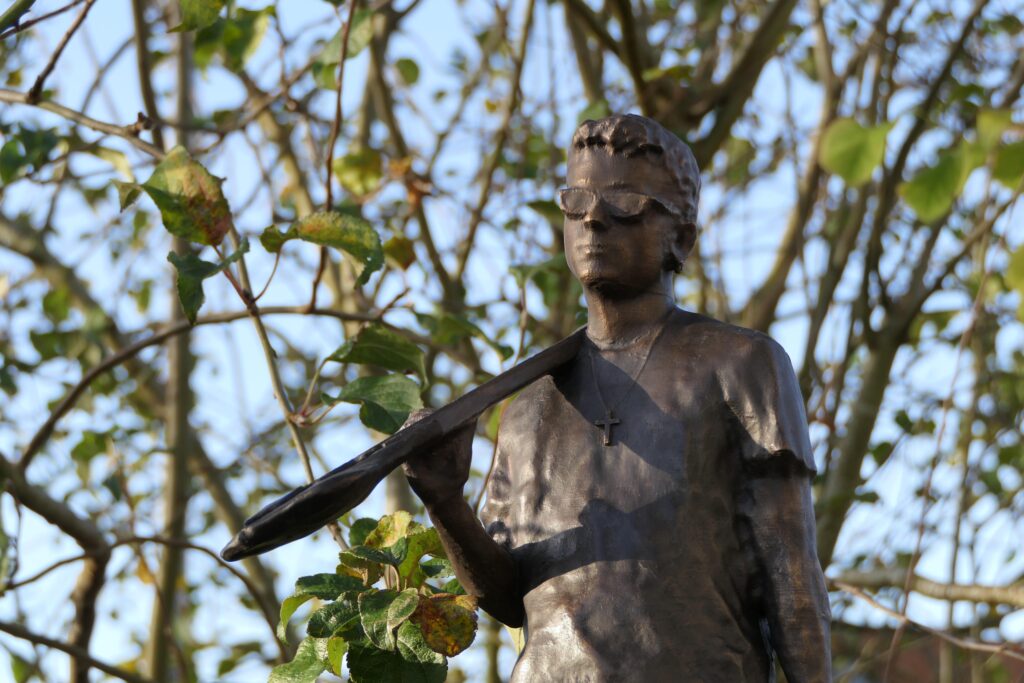Incredible Discovery: Missing 1971 Jet Found in Lake
Introduction
The serene waters of Lake Champlain, nestled between New York and Vermont, have long held their secrets. Over the years, this expansive lake has been the subject of numerous legends and mysteries, from tales of the mythical lake monster Champ to the various shipwrecks scattered across its depths. However, on a crisp morning in June 2024, a team of underwater archaeologists and divers made a discovery that has since captured the imagination of the nation: the wreckage of a jet that vanished in 1971.
A Discovery Decades in the Making
The discovery of the missing jet was not a result of mere chance. It was the culmination of years of meticulous research and exploration. Dr. Helen Gardner, a renowned underwater archaeologist from the University of Vermont, had been studying the depths of Lake Champlain for over two decades. Her team’s primary focus was on mapping the lake’s underwater topography and uncovering historical artifacts. The jet was an unexpected, yet profoundly significant, find.
“Finding the jet was like piecing together a complex puzzle,” Dr. Gardner explained. “We had gathered bits of information from various sources over the years, but it was only recently that we had the technology and resources to make such a discovery possible.”
The Vanishing Act of 1971
On a clear day in October 1971, a small jet, piloted by Air Force Captain Robert M. Johnson, took off from a military base in upstate New York. The mission was a routine training exercise, with no indication that anything would go awry. However, within an hour of takeoff, the jet vanished from radar screens. Despite extensive search efforts, no trace of the aircraft or its pilot was found. The disappearance baffled authorities and left Captain Johnson’s family and colleagues in a state of agonizing uncertainty.
For years, theories abounded. Some speculated that the jet had crashed into a remote area of the Adirondack Mountains, while others suggested it might have been hijacked or experienced a catastrophic mid-air failure. Yet, with no solid evidence, the mystery remained unsolved.
Breakthrough with Modern Technology
The advent of advanced sonar technology and underwater drones revolutionized underwater exploration. Dr. Gardner’s team utilized these cutting-edge tools to scan the lakebed, creating detailed maps of the underwater terrain. The initial discovery of the jet was made through a sonar scan that revealed an anomalous shape at a depth of 130 feet, nestled in a remote part of the lake where few had ventured before.
Upon closer inspection with an underwater drone equipped with high-definition cameras, the unmistakable outline of the jet became clear. The aircraft was remarkably well-preserved, a silent testament to the cold, dark waters of Lake Champlain that had safeguarded it for over five decades.
Unraveling the Mystery
Once the wreckage was confirmed to be the missing jet, the next step was to piece together the events that led to its disappearance. Preliminary investigations suggest that Captain Johnson encountered a mechanical failure shortly after takeoff. Data recovered from the wreckage indicates that he attempted to make an emergency landing on the lake, a move that likely saved the aircraft from a more devastating impact on land.
Forensic analysis of the wreckage is ongoing. The team hopes to recover more data from the jet’s flight instruments, which could provide further insights into the final moments of the flight. “Every piece of information is crucial in understanding what happened,” said Dr. Gardner. “Our goal is to give closure to Captain Johnson’s family and to add a chapter to the history of aviation that has been missing for too long.”
The Human Element
The discovery of the jet is more than just an archaeological achievement; it’s a deeply human story. Captain Johnson’s family, who have lived with the pain of uncertainty for over fifty years, were informed of the discovery before it was made public. The emotional impact was profound. Laura Johnson, Captain Johnson’s daughter, was only a child when her father disappeared. Now in her late fifties, she spoke about the mixed emotions she felt upon hearing the news.
“It’s a relief to finally know what happened,” she said. “But it also brings back a lot of memories and emotions. My father was a hero, and I’m glad that his story will be told.”
The Johnson family plans to visit the site of the discovery later this year. There are also discussions about recovering parts of the wreckage for a memorial, ensuring that Captain Johnson’s legacy is preserved and honored.
Impact on Aviation History
The discovery of the missing jet has significant implications for the field of aviation history. It provides a rare opportunity to study a Cold War-era aircraft in its original state, offering insights into the technology and design of the period. Aviation historians are particularly interested in the mechanical aspects of the jet, which could shed light on the potential failure that led to its demise.
Furthermore, the discovery underscores the importance of continuing to search for and study missing aircraft. “Every discovery like this helps us improve our understanding of aviation safety and technology,” said Dr. Michael Evans, an aviation historian at the Smithsonian National Air and Space Museum. “It’s a reminder that every missing aircraft represents a story worth uncovering.”
The Role of Lake Champlain
Lake Champlain has long been a focal point for both historical and environmental studies. The lake’s unique ecosystem and its role in early American history have been well-documented, but the discovery of the jet adds a new dimension to its narrative. The lake, which has been a vital resource for the surrounding communities, now also serves as the final resting place for a piece of aviation history.
Efforts are underway to ensure that the site of the wreckage is protected. Local authorities, in collaboration with Dr. Gardner’s team, are working to establish guidelines for divers and researchers who may wish to visit the site. “Preserving the integrity of the site is paramount,” said Dr. Gardner. “We want to ensure that it remains a place of respect and learning.”
Read More: “UN: Drastic Changes Needed 2 Avoid ‘Climate Hell’”
The Broader Significance
The discovery of the missing jet resonates beyond the immediate findings and historical significance. It is a story of perseverance, technological advancement, and the enduring human spirit. It highlights the incredible progress made in the fields of archaeology and underwater exploration, demonstrating how modern technology can unlock secrets of the past.
Moreover, it serves as a poignant reminder of the sacrifices made by military personnel. Captain Johnson’s story is one of countless others who have risked their lives in service to their country. By uncovering and honoring these stories, we ensure that their contributions are remembered and appreciated.
Looking Ahead
As the investigation into the jet’s disappearance continues, there is a renewed interest in exploring other mysteries of Lake Champlain. Dr. Gardner’s team is already planning future expeditions, buoyed by the success of their recent discovery. “This is just the beginning,” she said. “There are many more stories waiting to be uncovered beneath the waters of Lake Champlain.”
The story of the missing 1971 jet is a testament to the power of discovery and the enduring allure of the unknown. It captivates the imagination and reminds us of the importance of never giving up in the face of mystery. As the nation reflects on this incredible discovery, it is clear that the legacy of Captain Robert M. Johnson, and the waters of Lake Champlain, will continue to inspire and intrigue for generations to come.
Scientific Analysis
Following the initial discovery, a detailed scientific analysis was undertaken to understand the state of the wreckage and the factors that contributed to its preservation. The cold, low-oxygen environment at the lake’s depth played a crucial role in maintaining the structural integrity of the jet. Marine biologists and chemists are studying the corrosion patterns and biological growth on the wreckage to gain insights into the lake’s underwater ecosystem and its effects on submerged metal objects.
Technological Contributions
The use of autonomous underwater vehicles (AUVs) and remotely operated vehicles (ROVs) was pivotal in locating and documenting the wreckage. These advanced tools allowed the team to conduct thorough surveys of the lakebed, identify potential sites of interest, and capture high-resolution images and videos of the jet. The success of this mission has spurred interest in applying similar technology to other underwater archaeological projects worldwide.
Public Interest and Media Coverage
The discovery has garnered significant media attention, with news outlets across the country covering the story extensively. Documentaries and special reports are in the works, aiming to bring the story to a broader audience. The renewed interest in Lake Champlain has also boosted local tourism, with visitors eager to learn more about the lake’s rich history and the recent discovery.
Educational Opportunities
Educational institutions are leveraging the discovery to engage students in STEM (Science, Technology, Engineering, and Mathematics) fields. Schools and universities are incorporating the story into their curricula, emphasizing the interdisciplinary nature of the discovery. From history and archaeology to engineering and environmental science, the story of the missing jet offers valuable lessons and inspiration for students.
Community Involvement
The local communities around Lake Champlain have been actively involved in the aftermath of the discovery. Public talks, exhibitions, and community events are being organized to share the findings and celebrate the achievement. The discovery has fostered a sense of pride and curiosity among residents, highlighting the importance of preserving and exploring local history.
Honoring Captain Johnson
Efforts are being made to honor Captain Robert M. Johnson’s legacy. Memorials and plaques are being considered at key locations around Lake Champlain, and a scholarship fund in his name has been established to support aspiring pilots and students in aviation-related fields. These initiatives aim to ensure that Captain Johnson’s bravery and service are remembered and celebrated for years to come.
Future Research and Exploration
The success of the jet discovery has opened new avenues for research and exploration in Lake Champlain and beyond. Plans are underway for additional underwater surveys to locate other historical artifacts and shipwrecks. Collaborative efforts between universities, research institutions, and government agencies are being strengthened to support these initiatives.
The Broader Implications for Underwater Archaeology
The discovery of the missing 1971 jet highlights the potential for significant finds in underwater archaeology. It underscores the importance of continued investment in technology and research to explore and understand our submerged cultural heritage. The lessons learned from this discovery will inform future projects and contribute to the broader field of archaeology.
Conclusion
The incredible discovery of the missing 1971 jet in Lake Champlain is a milestone in underwater archaeology and a poignant human story. It reflects the advances in technology, the dedication of researchers, and the enduring allure of solving historical mysteries. As we look to the future, this discovery serves as a reminder of the importance of perseverance, innovation, and respect for those who came before us.
Captain Robert M. Johnson’s story, and the waters of Lake Champlain, will continue to inspire and intrigue, reminding us of the enduring mysteries that lie beneath the surface and the relentless human spirit that seeks to uncover them





